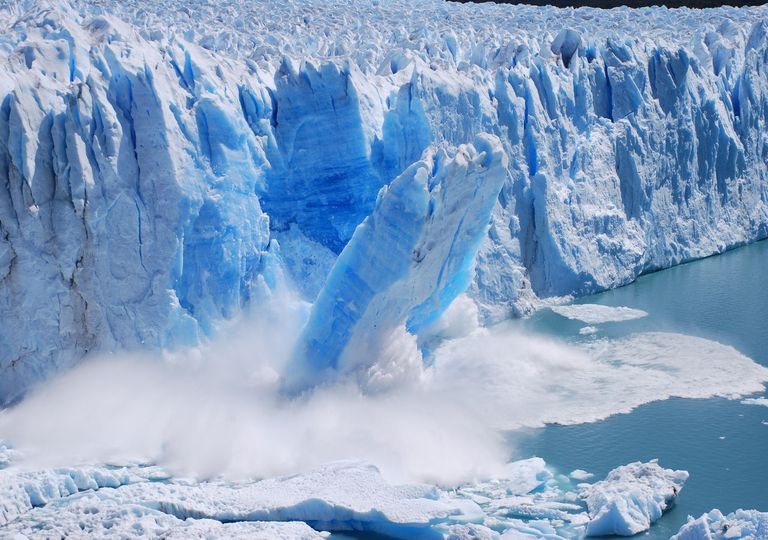
It is one of the most impressive glaciers in the world, and has been considered the eighth wonder for the spectacular views it offers.
Located in an area surrounded by forests and mountains, it is within the Los Glaciares National Park, created in 1937 in the Province of Santa Cruz, in the south of the Argentine Republic. This park, with an area of 724,000 ha, has a total of 356 glaciers.
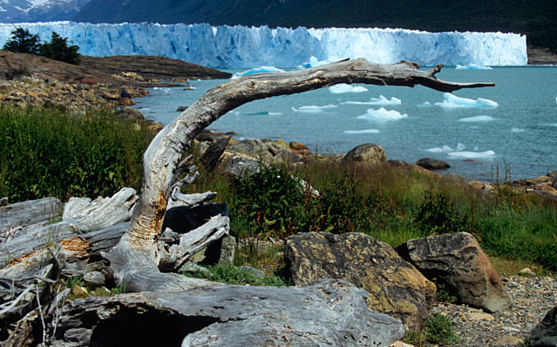
As it advances, it dams the waters of the Brazo Rico of Lake Argentino, with which the level of the latter rises up to 30 meters above that of Lake Argentino, putting pressure on the ice.
First, a tunnel is created with a vault of more than 50 meters through which the waters of the Brazo Rico descend to Lake Argentino.
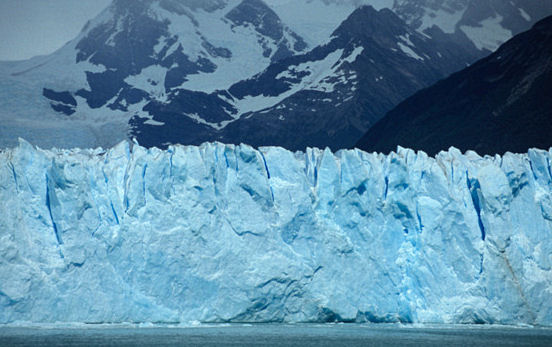
The erosion caused by the water finally causes the collapse of the vault, in one of the most impressive spectacles that can be witnessed. The process has been repeated at irregular intervals: the last calving began on July 4 and ended on July 9, 2008:15 local time), just two years after the previous one (March 2006). However, the 2004 calving occurred after 16 years (February 1988), when the difference in water level between the iceberg channel and the Rico arm reached 30 m. Tourists can enjoy this spectacle from only about 400 m away, in facilities specially created for observation. The last calving of the Perito Moreno Glacier occurred on March 10, 2016.
The ruptures do not have a fixed periodicity. Traditionally, one was estimated to occur every three or four years, but there have been times when they occurred in shorter periods and others when they did not occur for many years, raising the fear that the phenomenon had stopped occurring.
The first rupture.

The front of the glacier began to advance towards the opposite shore at the end of the 19th century. In 1899 it was 750 m from the Magallanes peninsula. In the first decades of the 20th century it continued to progress, managing to close the arm for the first time in 1917, followed by the first rupture.
Other notable events.
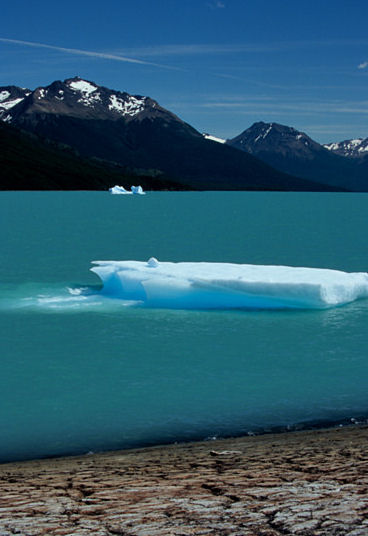
The phenomenon occurred again in 1935. At the end of 1939, due to the flooding caused by the dammed waters, which affected numerous agricultural establishments, and without yet seeing the economic value that this natural event could represent from a tourist point of view, the Argentine Ministry of the Navy launched explosives on the ice dam, without being able to obtain the desired result of artificially consolidating a breach for the evacuation of the waters. The rupture occurred naturally in February of the following year. In 1952, the closure produced a flooded surface of 6,670 ha; it affected crop and livestock fields, but not buildings.
The rupture in 1966 was the one that produced one of the largest volumes of water evacuated by the Santa Cruz River, which exceeded 2,000 m³ per second, measured at the Charles Fuhr gauging station.


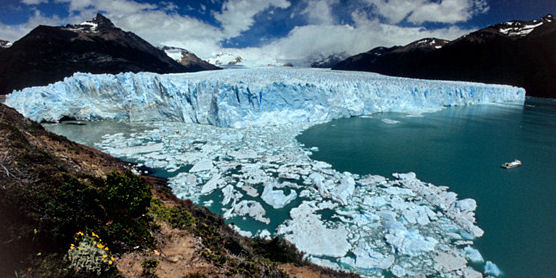
Es uno de los glaciares más imponentes del mundo, y ha sido considerado la octava maravilla por las espectaculares vistas que ofrece.
Situado en una zona rodeada de bosques y montañas, queda dentro del Parque Nacional Los Glaciares, creado en 1937 en la Provincia de Santa Cruz, en el sur de la República Argentina. Este parque, de 724.000 ha, tiene en total 356 glaciares.
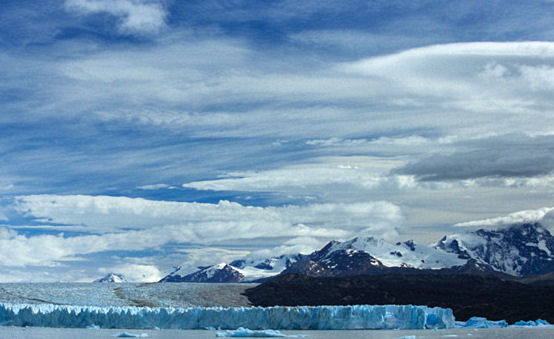
En su avance represa las aguas del Brazo Rico del Lago Argentino, con lo que el nivel de aquel llega a elevarse hasta 30 metros sobre el del Lago Argentino, haciendo presión sobre los hielos.
En primer lugar se crea un túnel con una bóveda de más de 50 metros por el que las aguas del Brazo Rico descienden hasta el Lago Argentino.
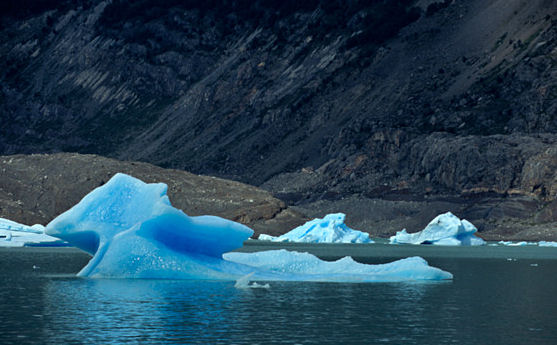
La erosión causada por el agua provoca finalmente el derrumbe de la bóveda, en uno de los espectáculos más imponentes que puedan presenciarse. El proceso se ha repetido a lo largo de intervalos irregulares: la última ruptura, que comenzó a producirse el 4 de julio y culminó el 9 de julio de 2008 (11:15 hora local), sólo dos años después de la anterior (marzo de 2006).
Sin embargo, la ruptura de 2004 se produjo después de 16 años (febrero de 1988), cuando la diferencia de nivel de las aguas entre el canal de los témpanos y el brazo Rico llegó a 30 m. El turista puede gozar de este espectáculo a sólo unos 400 m de distancia, en instalaciones especialmente creadas para la observación. La última ruptura del Glaciar Perito Moreno se produjo el 10 de marzo de 2016.
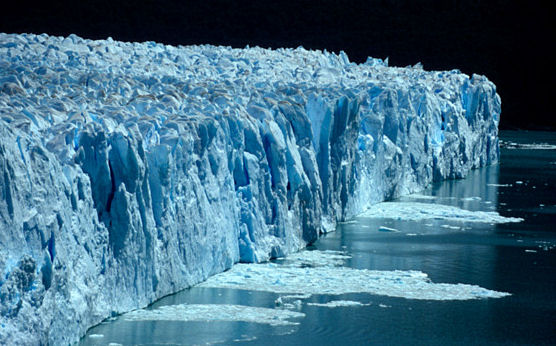
Las rupturas no tienen una periodicidad fija. Tradicionalmente se estimaba una cada tres o cuatro años, pero ha habido épocas donde se sucedían en períodos más cortos y otros en los que no ocurrió durante muchos años, temiéndose la posibilidad de que el fenómeno hubiera dejado de producirse.
La primera ruptura.
El frente del glaciar comenzó a avanzar hacia la ribera opuesta a fines del siglo xix. En el año 1899 se hallaba a 750 m de la península Magallanes. En los primeros lustros del siglo xx continuó su progresión, logrando en el año 1917 cerrar por primera vez el brazo, seguido de la primera ruptura.
Otros eventos destacados.
El fenómeno se volvió a presentar en el año 1935. En el cierre del año 1939, a causa de la inundación producida por las aguas embalsadas, la que afectó a numerosos establecimientos agropecuarios, y sin vislumbrar aún el valor económico que desde el punto de vista turístico este evento natural podría representar, el Ministerio de Marina argentino lanzó explosivos sobre el endicamiento de hielo, sin poder obtener el resultado pretendido de consolidar artificialmente una brecha para la evacuación de las aguas. La ruptura ocurrió naturalmente en febrero del año siguiente. En el año 1952 el cierre produjo una superficie inundada de 6670 ha; afectó a campos de cultivos y pecuarios, pero no a construcciones.
La ruptura del año 1966 fue la que produjo uno de los mayores volúmenes de agua evacuados por el río Santa Cruz, el que superó los 2000 m³ por segundo, medidos en la estación de aforo Charles Fuhr.
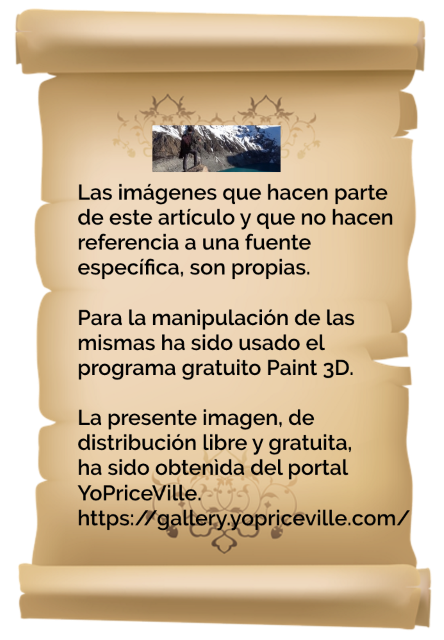


Sources consulted (my property) for the preparation of this article. Some paragraphs may be reproduced textually.
Fuentes consultadas (de mi propiedad) para la elaboración del presente artículo. Algunos párrafos pueden estar reproducidos textualmente.
| Argentina Discovery. |  |
|---|---|
| Galería Fotográfica de Argentina. |  |
| Viaggio in Argentina. |  |
| Patagonia Express. |  |

Upvoted. Thank You for sending some of your rewards to @null. Get more BLURT:
@ mariuszkarowski/how-to-get-automatic-upvote-from-my-accounts@ blurtbooster/blurt-booster-introduction-rules-and-guidelines-1699999662965@ nalexadre/blurt-nexus-creating-an-affiliate-account-1700008765859@ kryptodenno - win BLURT POWER delegationNote: This bot will not vote on AI-generated content
Thanks @ctime and curators team!
Telegram and Whatsapp
Thank you for supporting my content @blurtconnect-ng.